The average cost of Mentoplasty in Thailand approximately ranges between THB 72369 to 117288 (USD 2030 to USD 3290)
Mentoplasty or chin reduction is a chin enhancement surgical procedure, which can be done by either by enhancement with an implant or by a jaw bone reduction surgery. The procedure is performed under local anesthesia with sedation or general anesthesia and it takes about 1-3 hrs., depending on the plan of the surgery.
Medical tourism is a booming industry and is getting a lot of promotion by the Thailand government. The reason why Thailand is one of the most preferred destinations is the combination of high-quality facilities, English-speaking medical professionals, cost-effectiveness and its beaches Cosmetic surgeons in Thailand are well-known for their commitment and skills. Most of the hospitals in Thailand are offering international facilities with cutting-edge diagnostic methods and advanced technology for all type of cosmetic procedures.
The cost of Mentoplasty surgery in Thailand, with the quality of treatment and aftercare provided, are comparable with few of the most famed medical tourism destinations like Singapore, Turkey, India and UAE. Mentoplasty Surgery cost in Thailand including the surgery, aftercare, and stay is almost less than one-sixth when compared with the treatment cost offered in US or UK.
| City | Minimum Cost | Maximum Cost |
|---|---|---|
| Nonthaburi | USD 2030 | USD 3250 |
| Bangkok | USD 2050 | USD 3130 |
| Country | Cost | Local_currency |
|---|---|---|
| Czechia | USD 2090 | Czechia 47422 |
| Greece | USD 2070 | Greece 1904 |
| Hungary | USD 3200 | Hungary 1115392 |
| India | USD 2020 | India 167963 |
| Lithuania | USD 3230 | Lithuania 2972 |
| Malaysia | USD 3000 | Malaysia 14130 |
| Poland | USD 1240 | Poland 5010 |
| South Korea | USD 2500 | South Korea 3356725 |
| Thailand | USD 2030 | Thailand 72370 |
| Tunisia | USD 2500 | Tunisia 7775 |
| Turkey | USD 2745 | Turkey 82734 |
| United Arab Emirates | USD 4040 | United Arab Emirates 14827 |
| United Kingdom | USD 5190 | United Kingdom 4100 |
Treatment cost
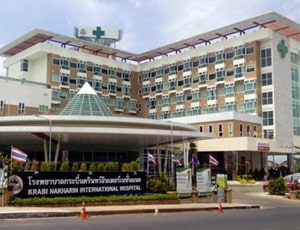
Types of Mentoplasty in Krabi Nakharin International Hospital and its associated cost
| Treatment Option | Approximate Cost Range (USD) | Approximate Cost Range (THB) |
|---|---|---|
| Mentoplasty (Overall) | 2233 - 2958 | 81717 - 107681 |
| Chin Implant Surgery | 2288 - 2874 | 82173 - 103472 |
| Sliding Genioplasty | 2321 - 2931 | 81625 - 102078 |
| Chin Reduction | 2336 - 2884 | 84831 - 106151 |
| Genioplasty (Osteotomy) | 2365 - 2951 | 87480 - 108577 |

Types of Mentoplasty in Bangkok Plastic Surgery Clinic and its associated cost
| Treatment Option | Approximate Cost Range (USD) | Approximate Cost Range (THB) |
|---|---|---|
| Mentoplasty (Overall) | 2292 - 2941 | 82718 - 108289 |
| Chin Implant Surgery | 2331 - 2860 | 82301 - 99416 |
| Sliding Genioplasty | 2389 - 2856 | 85259 - 104509 |
| Chin Reduction | 2311 - 2981 | 83580 - 102266 |
| Genioplasty (Osteotomy) | 2379 - 2943 | 87405 - 106008 |
SPECIALITIES
FACILITIES & AMENITIES
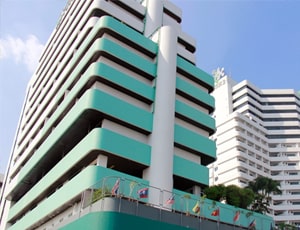
Types of Mentoplasty in Phyathai 2 International Hospital and its associated cost
| Treatment Option | Approximate Cost Range (USD) | Approximate Cost Range (THB) |
|---|---|---|
| Mentoplasty (Overall) | 2318 - 3022 | 82009 - 107649 |
| Chin Implant Surgery | 2300 - 2882 | 83003 - 103052 |
| Sliding Genioplasty | 2376 - 2902 | 85005 - 105117 |
| Chin Reduction | 2369 - 2947 | 85523 - 105900 |
| Genioplasty (Osteotomy) | 2440 - 2930 | 86999 - 104657 |
DOCTORS IN 11 SPECIALITIES
FACILITIES & AMENITIES

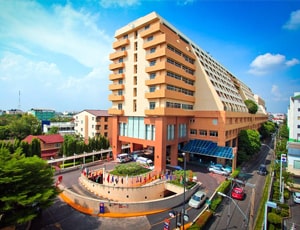
Types of Mentoplasty in Vejthani Hospital and its associated cost
| Treatment Option | Approximate Cost Range (USD) | Approximate Cost Range (THB) |
|---|---|---|
| Mentoplasty (Overall) | 2327 - 3000 | 81304 - 106148 |
| Chin Implant Surgery | 2281 - 2788 | 80814 - 100179 |
| Sliding Genioplasty | 2364 - 2896 | 82095 - 103265 |
| Chin Reduction | 2359 - 2929 | 85814 - 102632 |
| Genioplasty (Osteotomy) | 2442 - 2964 | 84403 - 104212 |
DOCTORS IN 13 SPECIALITIES
FACILITIES & AMENITIES

Types of Mentoplasty in Yanhee International Hospital and its associated cost
| Treatment Option | Approximate Cost Range (USD) | Approximate Cost Range (THB) |
|---|---|---|
| Mentoplasty (Overall) | 2274 - 2999 | 80876 - 105071 |
| Chin Implant Surgery | 2271 - 2867 | 82248 - 99619 |
| Sliding Genioplasty | 2325 - 2927 | 83078 - 102278 |
| Chin Reduction | 2333 - 2943 | 84584 - 103012 |
| Genioplasty (Osteotomy) | 2380 - 2983 | 84417 - 107828 |
DOCTORS IN 8 SPECIALITIES
FACILITIES & AMENITIES
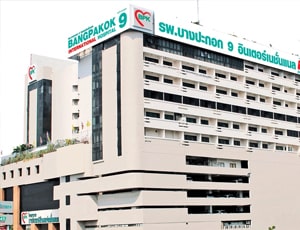
Types of Mentoplasty in Bangpakok 9 International Hospital and its associated cost
| Treatment Option | Approximate Cost Range (USD) | Approximate Cost Range (THB) |
|---|---|---|
| Mentoplasty (Overall) | 2328 - 3025 | 79663 - 108543 |
| Chin Implant Surgery | 2319 - 2799 | 80795 - 99538 |
| Sliding Genioplasty | 2362 - 2959 | 81688 - 105440 |
| Chin Reduction | 2410 - 2891 | 84148 - 103543 |
| Genioplasty (Osteotomy) | 2418 - 3022 | 84690 - 106397 |
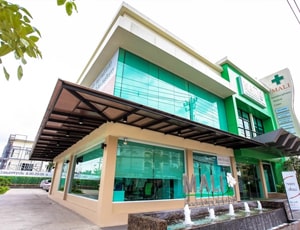
Types of Mentoplasty in MALI Interdisciplinary Hospital and its associated cost
| Treatment Option | Approximate Cost Range (USD) | Approximate Cost Range (THB) |
|---|---|---|
| Mentoplasty (Overall) | 2070 - 2698 | 73718 - 95729 |
| Chin Implant Surgery | 2064 - 2580 | 73876 - 91483 |
| Sliding Genioplasty | 2117 - 2622 | 75007 - 93690 |
| Chin Reduction | 2131 - 2650 | 75823 - 93911 |
| Genioplasty (Osteotomy) | 2183 - 2698 | 77834 - 95548 |

Types of Mentoplasty in Bangkok Hospital and its associated cost
| Treatment Option | Approximate Cost Range (USD) | Approximate Cost Range (THB) |
|---|---|---|
| Mentoplasty (Overall) | 2268 - 2962 | 81106 - 105791 |
| Chin Implant Surgery | 2282 - 2790 | 82808 - 101001 |
| Sliding Genioplasty | 2299 - 2953 | 81910 - 102957 |
| Chin Reduction | 2379 - 2944 | 83558 - 105477 |
| Genioplasty (Osteotomy) | 2433 - 3040 | 85001 - 106884 |
DOCTORS IN 13 SPECIALITIES
FACILITIES & AMENITIES

Types of Mentoplasty in Radiance Skin Clinic and its associated cost
| Treatment Option | Approximate Cost Range (USD) | Approximate Cost Range (THB) |
|---|---|---|
| Mentoplasty (Overall) | 2051 - 2685 | 73338 - 95879 |
| Chin Implant Surgery | 2058 - 2571 | 73957 - 91681 |
| Sliding Genioplasty | 2119 - 2615 | 75191 - 93813 |
| Chin Reduction | 2129 - 2640 | 75740 - 93835 |
| Genioplasty (Osteotomy) | 2186 - 2701 | 77832 - 96126 |

Types of Mentoplasty in Asia Cosmetic Hospital and its associated cost
| Treatment Option | Approximate Cost Range (USD) | Approximate Cost Range (THB) |
|---|---|---|
| Mentoplasty (Overall) | 2054 - 2695 | 73550 - 95951 |
| Chin Implant Surgery | 2056 - 2568 | 73300 - 91206 |
| Sliding Genioplasty | 2110 - 2621 | 75184 - 93578 |
| Chin Reduction | 2140 - 2636 | 76328 - 93885 |
| Genioplasty (Osteotomy) | 2192 - 2695 | 77504 - 95654 |
DOCTORS IN 3 SPECIALITIES
FACILITIES & AMENITIES

Types of Mentoplasty in Kamol Cosmetic Hospital and its associated cost
| Treatment Option | Approximate Cost Range (USD) | Approximate Cost Range (THB) |
|---|---|---|
| Mentoplasty (Overall) | 2060 - 2698 | 73682 - 96059 |
| Chin Implant Surgery | 2070 - 2561 | 73925 - 91972 |
| Sliding Genioplasty | 2120 - 2619 | 75120 - 93707 |
| Chin Reduction | 2136 - 2648 | 76351 - 94074 |
| Genioplasty (Osteotomy) | 2186 - 2695 | 77443 - 95779 |
SPECIALITIES
FACILITIES & AMENITIES

Types of Mentoplasty in Asian Institute of Medical Sciences and its associated cost
| Treatment Option | Approximate Cost Range (USD) | Approximate Cost Range (INR) |
|---|---|---|
| Mentoplasty (Overall) | 2058 - 2737 | 168738 - 223188 |
| Chin Implant Surgery | 2051 - 2553 | 167776 - 210145 |
| Sliding Genioplasty | 2184 - 2698 | 178230 - 220893 |
| Chin Reduction | 2138 - 2636 | 174798 - 216444 |
| Genioplasty (Osteotomy) | 2210 - 2711 | 181007 - 223196 |
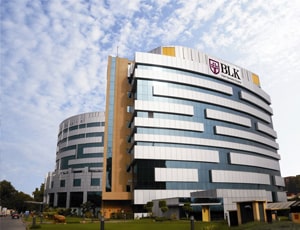
The cost for Mentoplasty ranges from USD 4160 - 4480 in BLK-Max Super Speciality Hospital
BLK-Max Super Speciality Hospital located in New Delhi, India is accredited by NABL. Also listed below are some of the most prominent infrastructural details:
DOCTORS IN 15 SPECIALITIES
FACILITIES & AMENITIES

Types of Mentoplasty in Fortis Hospital, Mulund and its associated cost
| Treatment Option | Approximate Cost Range (USD) | Approximate Cost Range (INR) |
|---|---|---|
| Mentoplasty (Overall) | 2281 - 3013 | 184368 - 250780 |
| Chin Implant Surgery | 2323 - 2885 | 188542 - 236166 |
| Sliding Genioplasty | 2413 - 3039 | 199329 - 239048 |
| Chin Reduction | 2371 - 2893 | 190152 - 237085 |
| Genioplasty (Osteotomy) | 2441 - 2964 | 197919 - 246765 |
DOCTORS IN 13 SPECIALITIES
FACILITIES & AMENITIES
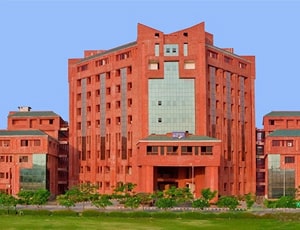
Types of Mentoplasty in Sharda Hospital and its associated cost
| Treatment Option | Approximate Cost Range (USD) | Approximate Cost Range (INR) |
|---|---|---|
| Mentoplasty (Overall) | 1909 - 2542 | 152893 - 204809 |
| Chin Implant Surgery | 1868 - 2322 | 153849 - 192595 |
| Sliding Genioplasty | 2038 - 2509 | 163937 - 205647 |
| Chin Reduction | 1946 - 2454 | 162883 - 199818 |
| Genioplasty (Osteotomy) | 2024 - 2526 | 168974 - 204850 |
DOCTORS IN 12 SPECIALITIES
FACILITIES & AMENITIES
Mentoplasty or chinplasty, and also known as genioplasty, is the surgical procedure by which chin line or chin can be corrected or improved to enhance the overall appeal of a face. The word mentoplasty has its origin from the Latin word “mentum,” which means “chin” and Greek word “plassein” refers to the word “formation.” With the help of a well-defined chin line as per the rest of the face, more masculine or feminine features are enhanced.
Mentoplasty or chin implant surgery can be a solution for quite a number or abnormal conditions. For a more youthful look, many consider facelift as well. Malformation of the chin resulting from developmental abnormalities in the jaw bone can be a reason. At times, any one side of the jaw has been growing, while the other side did not result in the asymmetry of the face. Congenital agenesis is a condition wherein some of the jaw bones are missing.
Chin implants give shape to a chin that has grown out of proportion compared to the rest of the facial features. The size and shape of the chin are different among men and women. As a result, many people choose to have a mentoplasty done along with their gender transition surgeries.
At times mentoplasty is included as part of craniofacial reconstruction following cancer treatment or any other kind of trauma. In an orthognathic surgery, the facial bones are realigned to enable the patient to talk and chew normally. Mentoplasty can also be combined with this.
Mentoplasty and chin implants are mainly used in adults since the jaw bone has already acquired its full size and form and there are no chances of any permanent tooth coming up in the gum. The procedure is mostly performed on people with small chin to increase its size.
There can be two ways of performing a chin augmentation procedure with or without implants. The first is by doing a sliding genioplasty and second is by insertion of an implant in the chin, under the skin. The latter is a shorter process that may take about half an hour to a complete, while the former is likely to take more time ranging from 40 to 90 minutes. However, the time can extend up to 3 hours in total if mentoplasty is combined and performed with an orthognathic surgery.
People suffering from mild to moderate microgenia are usually the best candidates for chin implants. Long time back when mentoplasty was not so common and the technology was not so advanced, cartilage from donors or from other parts of the patient's body was taken to form implants. But since 2003, an inert foreign material called alloplastic implants are being used. The reason behind this was is to reduce the risk of infection.
For the insertion of an implant, the surgeon has to take a call whether he would like to have an incision made inside the mouth (intraoral) or under the chin (submental). In both the cases, a significant amount of tissue is cut. Caution is practiced to avoid any damage to the major nerves in the chin.
Time taken for complete recovery is about two weeks at the most. Most people can resume normal life after 10 to 14 days. Take the following precautions to improve your rate of recovery.
Ask your healthcare adviser for the best multiple options and choose the one that meets your expectations
While depending upon a range of factors, the minimum cost for Mentoplasty in Thailand is USD 5000. Many multispeciality hospitals in Thailand that are Healthcare Accreditation Institute, JCI certified are approved and most sought after for treating international patients with Mentoplasty
Different hospitals have different pricing policy when it comes to the cost of Mentoplasty in Thailand. Some of the best hospitals for Mentoplasty offer a comprehensive package that covers the end-to-end expenses related to investigations and treatment of the patient. The Mentoplasty cost in Thailand includes the cost of anesthesia, medicines, hospitalization and the surgeon's fee. Extended hospital stay, complications after the surgery or new diagnosis may affect the overall cost of Mentoplasty in Thailand.
Mentoplasty in Thailand is offered by multiple hospitals across the country. Some of the best hospitals for Mentoplasty in Thailand include the following:
After discharge from the hospital, the patient has to stay for another 15 days in the country for complete recovery. This period is important to conduct all the follow-up tests to ensure that the surgery was successful and the patient can go back to the home country.
Apart from the cost of Mentoplasty, the patient is also required to pay additionally for daily meals and guest house accommodation. The per day cost in this case may start from USD 50 per person.
Some of the cpopular cities in Thailand that offer Mentoplasty include the following:
It is possible for patients to opt for video telemedicine consultation before they come for Mentoplasty in Thailand. Some of the surgeons offering this service include the following
| Doctor | Cost | Schedule Your Appointment |
|---|---|---|
| Dr. Worapong Leethochavalit | USD 61 | Schedule Now |
| Dr. Tanaporn Termwattanaphakdee | USD 61 | Schedule Now |
The patient has to spend about 4 days in the hospital after Mentoplasty for proper recovery and to get clearance for discharge. This phase is important to ensure that the patient is recovering well and is clinically stable. During this time, several tests are performed before the patient is deemed suitable for discharge.
There are more than 9 hospitals that offer Mentoplasty in Thailand. The above mentioned clinics have the required infrastructure and a dedicated unit where patients can be treated. Additionally, these hospitals are known to comply with the international standards as well as local legal requirements for the treatment of patients.
Some of the most sought after doctors for Mentoplasty in Thailand are: